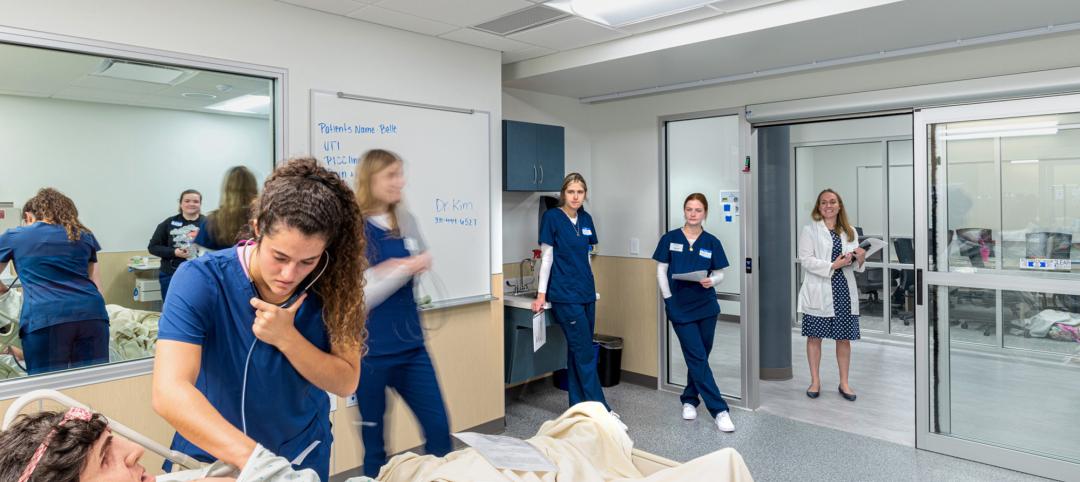A lot can happen and change in five years, and a lot has in healthcare. But to some degree many things have stayed the same due to resistance, being ignored, or just slow to change.
It has been five years since the Patient Protection and Affordable Care Act (PPACA, or ACA for short) was signed into law in March of 2010. Since that time, we have seen a continued shift to outpatient care, high utilization of hospital-based and free-standing emergency departments, the evolution of public and private insurance exchanges, the beginnings of defining quality and service metrics, and a slow migration from volume-based “first curve” world toward a value-based “second curve” industry.
The smart money is on shifting toward lower-cost, high-value care wrapped by a population health management mentality. Even if the payer system never moves fully to value-based, the more efficient and efficacious health systems emerging from this migration will be well positioned to provide competitive, low cost care in a volume-based or value-based system.
WHAT DO THE STATISTICS SAY?
An intended outcome of the ACA and reform is to reduce overall inpatient activity by managing health, reducing average length of stay (ALOS), reducing readmissions, and generally moving toward a holistic approach of population health rather than an acute, episodic approach.
Many are still skeptical that change is possible and that the government-sponsored system will fail. But data from the American Hospital Association (AHA) shows some interesting trends. From 2010–2012 (2012 is the latest data available at a national level), overall patient days and patient days per 1,000 population have declined. The number of inpatient beds has stabilized and decreased slightly, while emergency department visits and hospital-based outpatient visits continue to increase.
For years, pundits have postulated that with population increase and the aging Baby Boomer impact, inpatient utilization would increase. But what has happened overall, and in most markets, is the opposite. Inpatient days are declining.
In a Midwest market where CBRE Healthcare is currently working, Truven Health Analytics is projecting an overall inpatient use rate decline over the next five years. In many markets, providers are turning to Milliman models (Truven and Milliman provide data and consultative services to the healthcare industry related to retrospective and prospective healthcare utilization), projecting the impact of managed markets.
Clinical integration continues to increase with more than 60% of community hospitals (non-government facilities) affiliated in some manner with larger integrated delivery systems. Providers are realizing that there is value in integration, including payer leverage, rational distribution of services, access to clinical protocols, access to capital, sharing of clinical information, geographic diversity to better manage population health, and cost distribution to lower the overall cost of care.
Many systems that took part in the Accountable Care Organization pioneer projects have since left them, yet they still continue to develop their own efficient networks of care, partner with providers and payers, partner with community entities, and develop robust primary care networks through either traditional means or the establishment of primary care medical homes.
Regardless of what the government is doing or not doing, the market has responded and is getting ready for a value-based world where the inpatient hospital is no longer the center of the healthcare universe. Will there still be a need for acute-care hospitals? I say, without a doubt, yes.
But our focus on the “hospital on the hill” as the sole location for all of our healthcare needs has changed, and will continue to evolve.
WHAT ARE HEALTHCARE ORGANIZATIONS DOING ABOUT IT?
A sound planning approach that is implementation oriented is required. Time and dollars are too important to leave to hope and chance. The decisions are multi-variate and require a focus on strategy, facilities, real estate, financials, and overall care model.
1. Market Analysis Scenario Planning
A rigorous market analysis focusing on inpatient use rates, market share, and length of stay is required. As inpatient discharge rates decrease, so will overall bed demand.
This is an intended consequence of the ACA and the move to a value-based world. The goal is to manage hospitals stays (and the high costs associated with these stays) by better managing health.
We are modeling bed demand with several healthcare providers. These models are based on use rates remaining static or dropping, certainly not increasing. In the same models, we are adjusting market share to account for these drops.
But there has to be a corresponding strategy to increase market share, whether it be physician recruitment and alignment or through increased partnerships with other regional hospitals and providers that are referral sources.
Hope is not a strategy, but planning on how to shore up declining inpatient volumes is. As lengths of stay change, efficiency in operations will also demand that ALOS stabilize. All of this points to a steady state or decline in inpatient bed need.
2. Plan for Right-Sizing Inpatient Care
Inpatient care is not going away. However, our nation’s hospitals continue to age and are rife with infrastructure, standard-of-care, and operational issues. In short, they are out of date with contemporary and efficient care delivery.
Investment in inpatient core assets has slowed, and providers struggle with spending dollars when there is no guarantee on return on investment. Having a long-view to provide more efficient “outpatient like” hospitals must be the focus. Downsizing is a reality and re-investing in new/renovated modern facilities is occurring.
3. Plan for Ambulatory Care Strategies
As care continues to shift to ambulatory environments in primary and specialty care, healthcare organizations are seeking strategies and tactics to increase their capture rate of this market. Healthcare systems are developing robust primary care strategies to “blanket” their service area and cover lives.
Providers are also continuing to move “pure” ambulatory functions out of the high-cost, difficult to access, core hospital campus into dedicated, patient and provider friendly ambulatory care centers (ACCs). These ACCs are either on or off the medical campus. If they are on-campus, they should be separate and distinct from the inpatient chassis.
Owners, planners, project managers, architects, and builders need to provide the same level of creativity in site, facilities, and operational planning for ambulatory care as they have done for inpatient care over the last two decades.
CONCLUSION
Ultimately, healthcare providers are seeking direction on how to plan for a value-based world while still very much operating in a volume-based market. Successful organizations will position themselves to cover more lives and establish long-lasting relationships with physicians and other providers while re-tooling their inpatient and outpatient portfolio of assets to meet the changing needs and evolving requirements of payers and consumers.
By improving efficiency and developing broader networks, providers will succeed in today’s market. Following this approach will enhance volume in the short-term while preparing for long-term value-based incentives.
About the Author: Curtis Skolnick is Managing Director with CBRE Healthcare, based in Richmond, Va.
Related Stories
Giants 400 | Jan 15, 2024
Top 130 Hospital Facility Architecture Firms for 2023
HKS, HDR, Stantec, CannonDesign, and Page Southerland Page top BD+C's ranking of the nation's largest hospital facility architecture and architecture engineering (AE) firms for 2023, as reported in the 2023 Giants 400 Report.
Healthcare Facilities | Jan 7, 2024
Two new projects could be economic catalysts for a central New Jersey city
A Cancer Center and Innovation district are under construction and expected to start opening in 2025 in New Brunswick.
Designers | Jan 3, 2024
Designing better built environments for a neurodiverse world
For most of human history, design has mostly considered “typical users” who are fully able-bodied without clinical or emotional disabilities. The problem with this approach is that it offers a limited perspective on how space can positively or negatively influence someone based on their physical, mental, and sensory abilities.
Healthcare Facilities | Dec 19, 2023
A new hospital in Duluth, Minn., is now the region’s largest healthcare facility
In Duluth, Minn., the new St. Mary’s Medical Center, designed by EwingCole, is now the largest healthcare facility in the region. The hospital consolidates Essentia Health’s healthcare services under one roof. At about 1 million sf spanning two city blocks, St. Mary’s overlooks Lake Superior, providing views on almost every floor of the world’s largest freshwater lake.
Healthcare Facilities | Dec 7, 2023
New $650 million Baptist Health Care complex opens in Pensacola
Baptist Health Care’s new $650 million healthcare complex opened recently in Pensacola, Fla. Featuring a 10-story, 268-bed hospital, the project “represents the single-largest investment in the healthcare history of northwest Florida,” said Gresham Smith project executive Robert “Skip” Yauger, AIA, LEED AP. The 602,000 sf Baptist Hospital is equipped with a Level II trauma center that provides 61 exam rooms and three triage areas.
Engineers | Nov 27, 2023
Kimley-Horn eliminates the guesswork of electric vehicle charger site selection
Private businesses and governments can now choose their new electric vehicle (EV) charger locations with data-driven precision. Kimley-Horn, the national engineering, planning, and design consulting firm, today launched TREDLite EV, a cloud-based tool that helps organizations develop and optimize their EV charger deployment strategies based on the organization’s unique priorities.
Healthcare Facilities | Nov 3, 2023
The University of Chicago Medicine is building its city’s first freestanding cancer center with inpatient and outpatient services
The University of Chicago Medicine (UChicago Medicine) is building Chicago’s first freestanding cancer center with inpatient and outpatient services. Aiming to bridge longstanding health disparities on Chicago’s South Side, the $815 million project will consolidate care and about 200 team members currently spread across at least five buildings. The new facility, which broke ground in September, is expected to open to patients in spring 2027.
Sponsored | | Oct 17, 2023
The Evolution of Medical Facility Security
As the healthcare system grows, securing these facilities becomes ever more challenging. Increasingly, medical providers have multiple facilities within their networks, making traditional keying systems and credentialing impractical.
Healthcare Facilities | Oct 11, 2023
Leveraging land and light to enhance patient care
GBBN interior designer Kristin Greeley shares insights from the firm's latest project: a cancer center in Santa Fe, N.M.
Healthcare Facilities | Oct 9, 2023
Design solutions for mental health as a secondary diagnosis
Rachel Vedder, RA, LEED AP, Senior Architect, Design Collaborative, shares two design solutions for hospitals treating behavioral health patients.

















